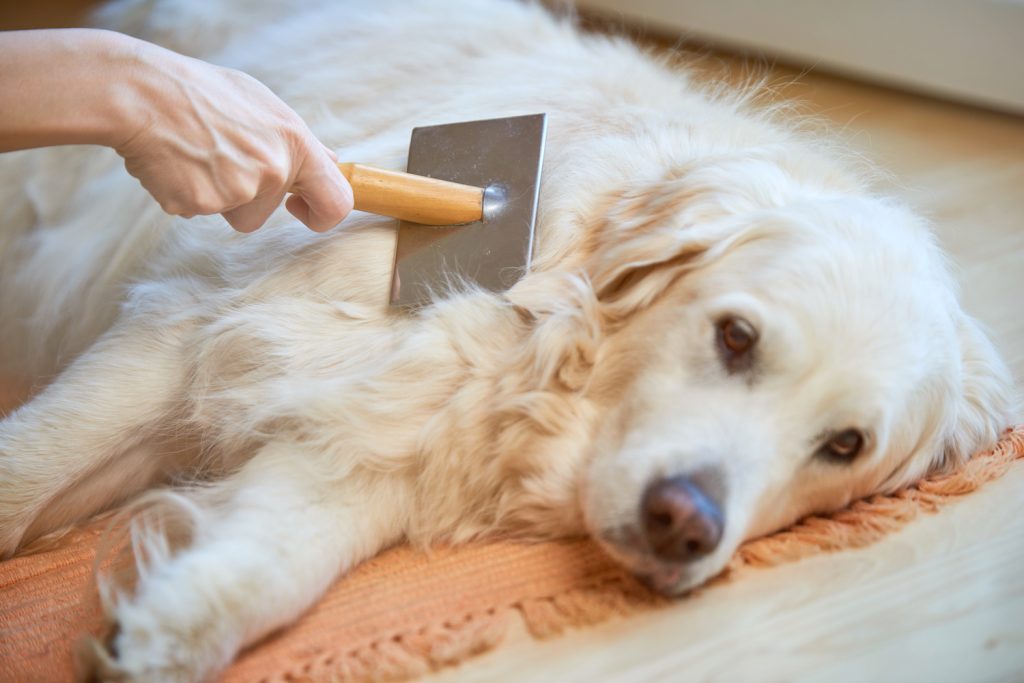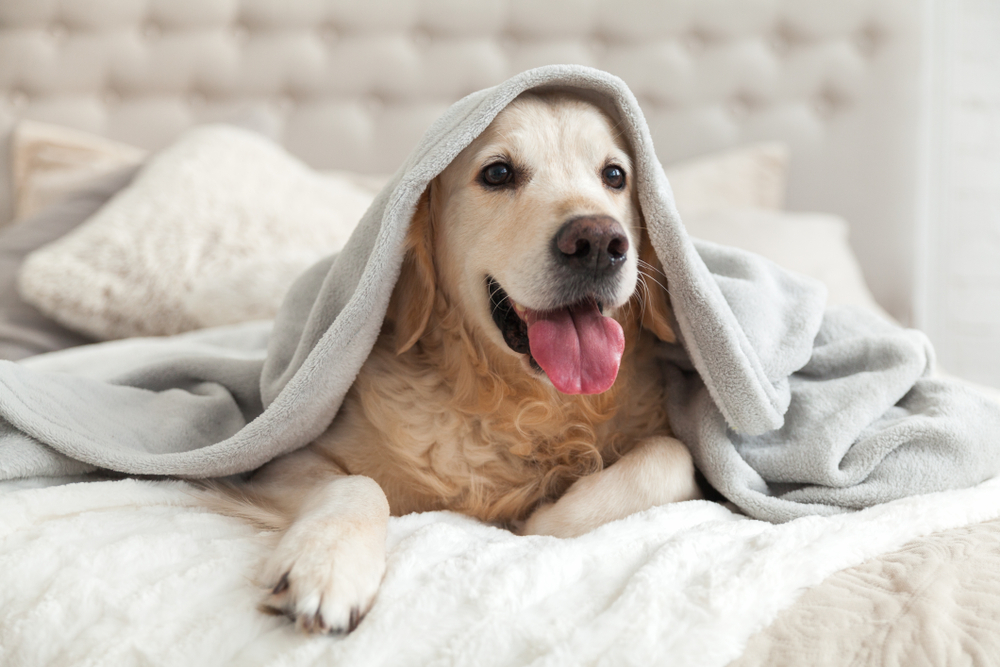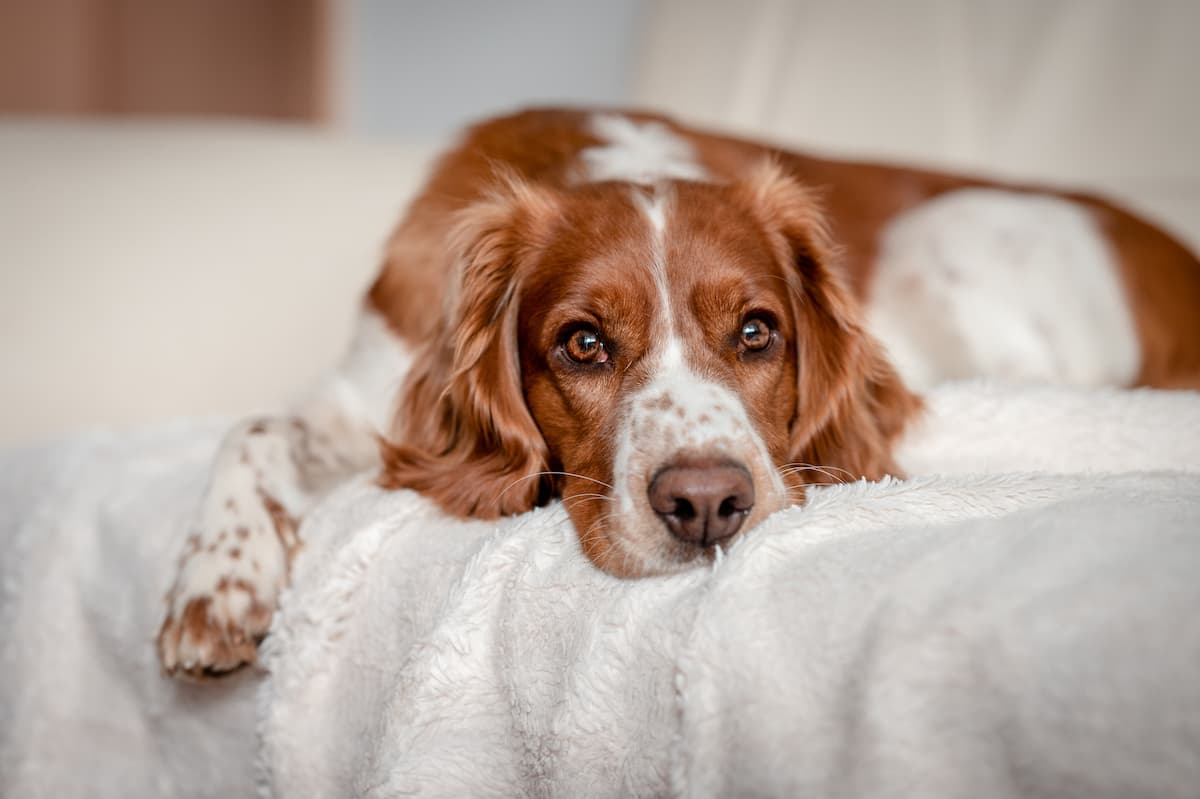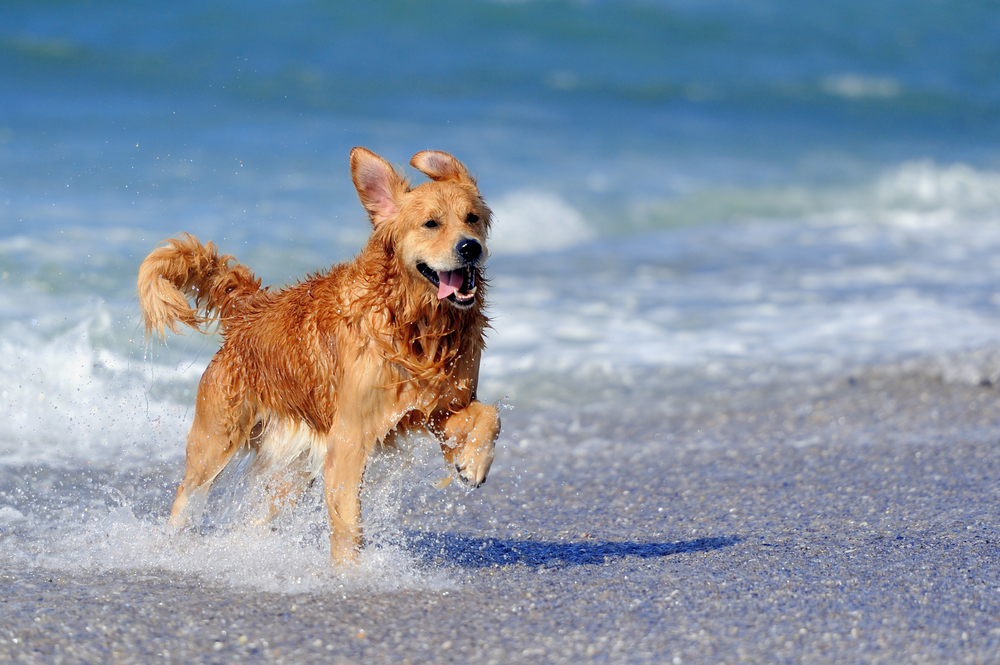The change of seasons can have a big impact on us humans, both positive and negative.
Summer comes with ice cream and days by the pool, but it can also come with hay fever and heat waves. Winter brings the comfort of warm baths and cosy jumpers, but for some, it also means dry skin and high heating bills. But have you ever wondered how the change of seasons affects our four-legged friends?
Sure, they might get some ice-cold treats in summer and extra-long cuddles in winter, but do they experience things like hay fever and dry skin? Do they feel the extra humidity in the air during hot months?
As it turns out, our pups do indeed feel the shift in temperature and everything that comes with it. Here’s how it affects them.
6 ways the change of seasons affects dogs
#1: Appetite
Colder months:
Like many animals, dogs’ appetites increase in autumn and winter. It’s an evolutionary response to help them store more body fat and stay warm. As a result, you may find them asking for more food than usual. As tempting as it is to give in, it’s important to avoid overfeeding. Instead, get their blood flowing with a brisk walk or some playtime. Occasional treats are fine, but try to stick to their usual amount of healthy, high-quality dog food.
Warmer months:
In warmer months, dogs may be less food-motivated—especially in the heat. Some pups might eat a little less than usual, which is generally fine unless it becomes extreme. Be sure to offer fresh food during cooler times of the day and keep their water bowl topped up to support hydration and digestion.
#2: Mood
Colder months:
You may have heard of seasonal affective disorder (SAD)—a form of depression that affects people during darker months. Dogs can experience this too. A UK veterinary charity found that 40% of dog owners noticed a “considerable downturn” in their pooch’s mood during winter. To help, get them outside for some vitamin D whenever possible, and on colder or rainy days, stimulate them with some indoor exercise, through games or puzzle toys.
Warmer months:
Sunshine and more daylight hours can work wonders on your pup’s mood. You might find them more upbeat, eager for walks, and generally more sociable. Just be cautious during heatwaves, as irritability or lethargy in extreme heat can sometimes mask discomfort or dehydration.
#3: Energy levels
Colder months:
Shorter days and colder weather can mess with your dog’s circadian rhythm. Just like us, they may produce more melatonin in low light, making them feel sleepier. While it’s tempting to let them snooze all day, regular walks (even short ones) are important to keep their energy up and prevent cabin fever.
Warmer months:
In hot weather, energy levels may drop due to heat-induced lethargy. For some dogs, intense activity during the day can be risky. Avoid walking during peak heat hours, keep them indoors where it’s cool, and offer plenty of water to keep them comfortable and safe. On days where it’s refreshing to be outside, take some inspiration from these 7 outdoor activities to do with your dog.
#4: Allergies
Colder months:
Dry winter air can cause flaky skin and itchiness in dogs, especially those prone to allergies. Keeping your dog well-hydrated, using a hypoallergenic shampoo, and supplementing their diet with omega-3s can help keep their skin comfortable through the season.
Warmer months:
In spring and summer, heat rash and environmental allergies like hay fever tend to flare up. Symptoms include dry and itchy skin, irritated eyes, sneezing, and a runny nose. Keep their bedding clean, mow the lawn regularly, and speak to your vet about eye drops or sprays to relieve symptoms if needed.
If your dog experiences dry or itchy skin in any season, take a look what they’re eating and find ways to change their diet to help improve their skin.
#5: Coat
Colder months:
In autumn and early winter, many dogs shed their lighter summer coat to grow in a thicker one for warmth. You may notice more fur around the house during this transition—and even ongoing shedding if your dog’s winter coat is particularly dense.
Grooming tips for colder months:
- Brush regularly to help remove dead fur and prevent matting in thicker coats. For double-coated breeds, an undercoat rake can be especially helpful.
- Keep baths to a minimum to avoid drying out their skin, and use a moisturising or hypoallergenic shampoo when you do.
- Trim long fur around paws and belly to prevent snow, mud, or wet grass from clinging and causing irritation.
- Check for dryness or dandruff, which can worsen in low humidity. Consider adding omega-3 supplements to support skin and coat health.
Warmer months:
Springtime shedding is common as dogs lose their dense winter coat in favour of something lighter and more breathable. Summer, however, is the sweet spot – the time of year that they experience the least shedding. That’s because they’ve already shed their winter coat and don’t yet need to let go of their thinner summer coat.
Grooming tips for warmer months:
- Increase brushing frequency during spring to help remove loose fur and prevent overheating.
- De-shedding tools or grooming gloves can be great for managing the seasonal “fur explosion.”
- Consider a trim for long-haired breeds—not a full shave, which can interfere with temperature regulation, but a tidy-up to help them stay cool.
- Keep an eye out for heat rash or skin irritation, particularly in areas where fur is thickest or air flow is limited.
Need help from a professional dog groomer? Search the Mad Paws database for someone near you!
 #6: Pain
#6: Pain
Colder months:
Cold weather can worsen joint pain and stiffness in dogs, especially those with arthritis. Warmth is key—think cosy jumpers, heated beds, soft blankets, and sunny spots in the house. Avoid letting them jump on furniture if it aggravates pain. Joint care supplements or anti-inflammatories may also help, so check in with your vet.
Warmer months:
Warmer weather often eases joint inflammation, making movement easier for dogs with arthritis or other chronic pain. This can be a great time to encourage gentle exercise and strengthen muscles. Just be mindful of overheating – short walks in the cooler parts of the day are ideal…or consider some water play!
Tips for helping your dog cope with the change of seasons
Each season brings its own perks and challenges, but there are a few things you can do to help ease the transition for your dog.
Keep them inside during extreme temperatures
Heat waves and particularly chilly days can be dangerous to dogs, especially if they’re left outside without adequate shelter. In summer, hot pavement can burn paws, and in winter, cold winds and frost can quickly lead to discomfort or even hypothermia. Make sure your dog has a warm, dry place to retreat to, and never leave them outdoors for extended periods in extreme conditions.
Ensure they stay active
Dogs need daily exercise year-round, but weather changes can make it trickier to stick to a routine. If it’s too hot for a walk, opt for indoor play, puzzle toys, or training sessions. In the colder months, brisk walks during the warmer parts of the day (usually mid-morning or early afternoon) can help, and indoor games like hide and seek, tug-of-war, or hallway fetch can keep them moving when it’s too cold or wet outside.
Keep on top of grooming
Pooches need brushing all year ‘round, but seasonal changes often trigger increased shedding or matting. In spring and autumn, dogs may shed their coat to prepare for the coming weather, so regular brushing can help manage loose fur and reduce allergens in the home. During summer, some breeds benefit from a shorter, heat-friendly haircut (check with a groomer if this suits your dog’s coat type). In winter, while you may want to let their fur grow out for warmth, it’s still important to prevent matting, especially if they get wet from rain or snow.
Pooches need brushing all year ‘round, but don’t be afraid to bring in the big guns (a.k.a. professional pet groomers) to help.
Consider winter gear for cold-sensitive dogs
Short-haired breeds, seniors, puppies, and dogs with certain medical conditions may struggle in cold weather. A dog jumper or coat can help keep them comfortable during walks, and booties can protect their paws from ice, salt, or frost. Always make sure any gear fits well and doesn’t restrict movement.
Watch for seasonal health changes
Changes in temperature, daylight, and allergens can all impact your dog’s health and behaviour. In winter, you may notice dry skin or cracked paw pads, especially in dogs that spend time outdoors. Use paw balm or moisturisers made for dogs to keep skin hydrated, and check paws regularly after walks. If your dog seems sluggish, irritable, or off their food with the seasonal shift, it might be worth speaking to your vet.




1 comment
We have a two year old Beagle who has taken to chewing through electric cables. Apart from risking electrocution, it is an expensive habit. I’ve been told there is a spray with a name like No Chew that can be sprayed onto whatever the dog chooses to chew. It is very unpalatable apparently. Do you know of such a product?